Camille Modesto
Agaw-dilim
Modesto visualizes the liminal space
Agaw-dilim is a body of work that continues Camille Modesto’s exploration of memory, longing, and nostalgia in the migrant experience. This is grounded in her family’s intergenerational migration from the Philippines to the United States, tackling grief and persistence.
In the piece, Kailan Ka Babalik?( When Are You Coming Back?), grief manifests in the emotional baggage that weighs more than what one can carry as they leave their family and country. In Naririnig Niyo Po Ba Ako?(Can You Hear Me?) persistence is explored through the migrants' use of FaceTime/Zoom video calls as a way to foster connection and continuing traditions. All throughout, Modesto visualizes the liminal space where these experiences exist.
The title, Agaw-dilim, is a Tagalog word for the golden hour, the breathtaking moment between light and dark. If directly translated, the word can mean snatching/grasping darkness. Modesto uses the term to signify the in-between; moments of transit, connection bypassing time differences, and the acceptance to change, knowing that the sun will rise again.
Kailan Ka Babalik? (When Are You Coming Back?) 2021, Suitcase, luggage scale, walis, kawali, clothes, blue raffia, and banig, 60 x 24 x 18
“Part of being in the Filipino diaspora is the constant reminder of what you’ve left behind, the uncertainty of your return, and grieving for lost time with loved ones. This body of work considers these experiences as a reflection of my own family’s migration history, values, and persistence.”
This body of work showcase the artist’s interdisciplinary practice with painting, sculpture, video, and installation. Utilizing materials from her childhood and objects from home, Modesto creates installations, and integrates them into paintings, bringing their inherent narratives and encouraging different perspectives. This act of extraction and repurposing redefines the objects as metaphors for migration and assimilation.
In the piece, OverTime, Modesto uses a balikbayan box, a box Filipinos use to send gifts to their families back home, and the pabitin, a Filipino party game where children reach for snacks and toys. Combining the two together, she creates a story that encompasses an aspect of migration that is both joyful and melancholic. In the video, Paano Mag Tiklop Ng Kulambo, a figure approaches a mosquito net hanging in an empty room and starts relearning how to fold it. In this poetic gesture, Modesto shows that preserving memory is needed to survive longing and nostalgia.
(right) OverTime 2022
Balikbayan box, bamboo, straw ribbons, corned beef, Vienna sausage, Spam, peanut butter, seventeen years of work, toothpaste, toothbrush, coffee, coffee creamer, popcorn, chocolates, forty hours a week, towels, bedsheets, iodized salt, pepper, garlic powder, thirteen thousand steps a day, souvenir shirts, shoes
40” x 30” x 30”
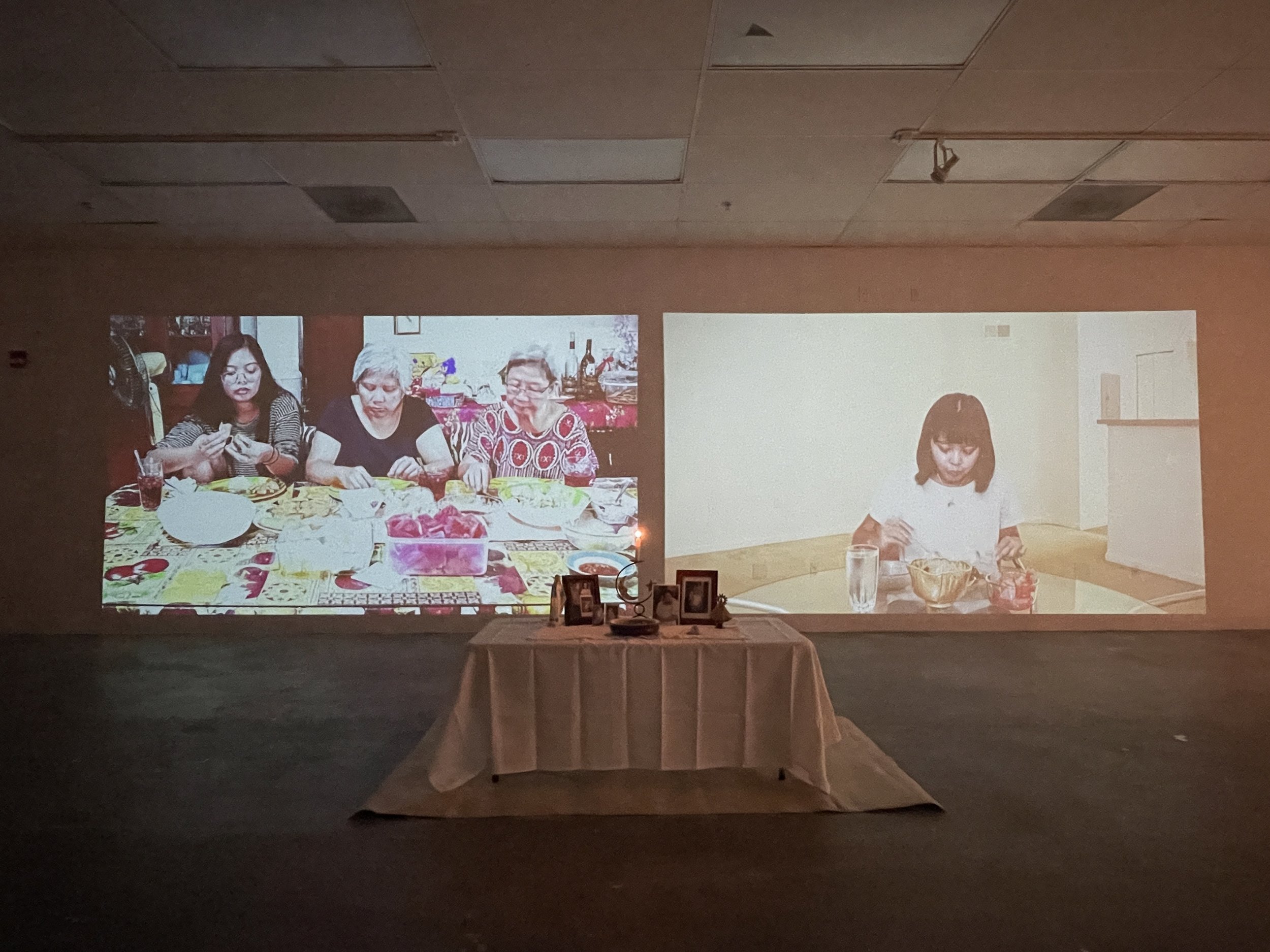
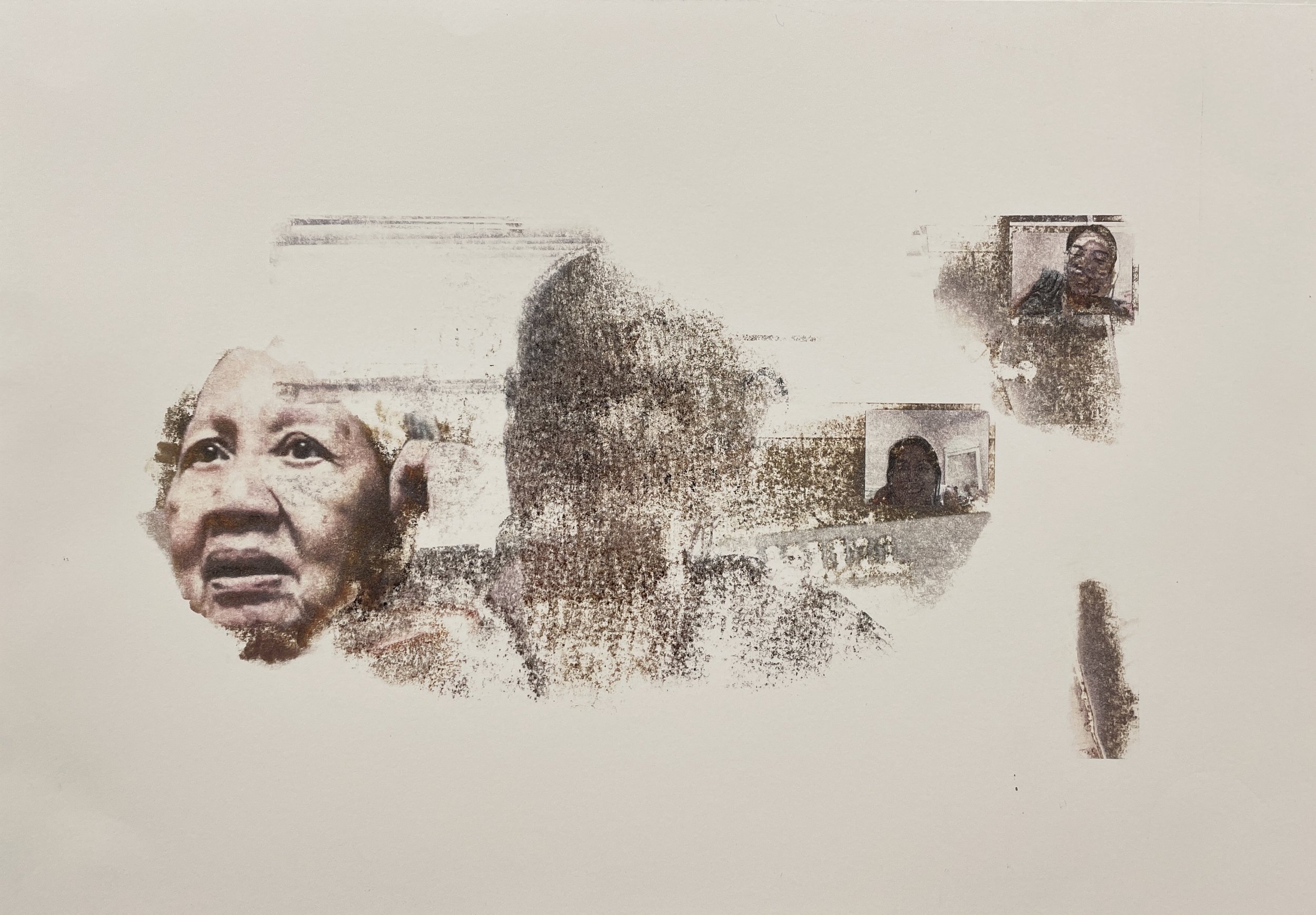
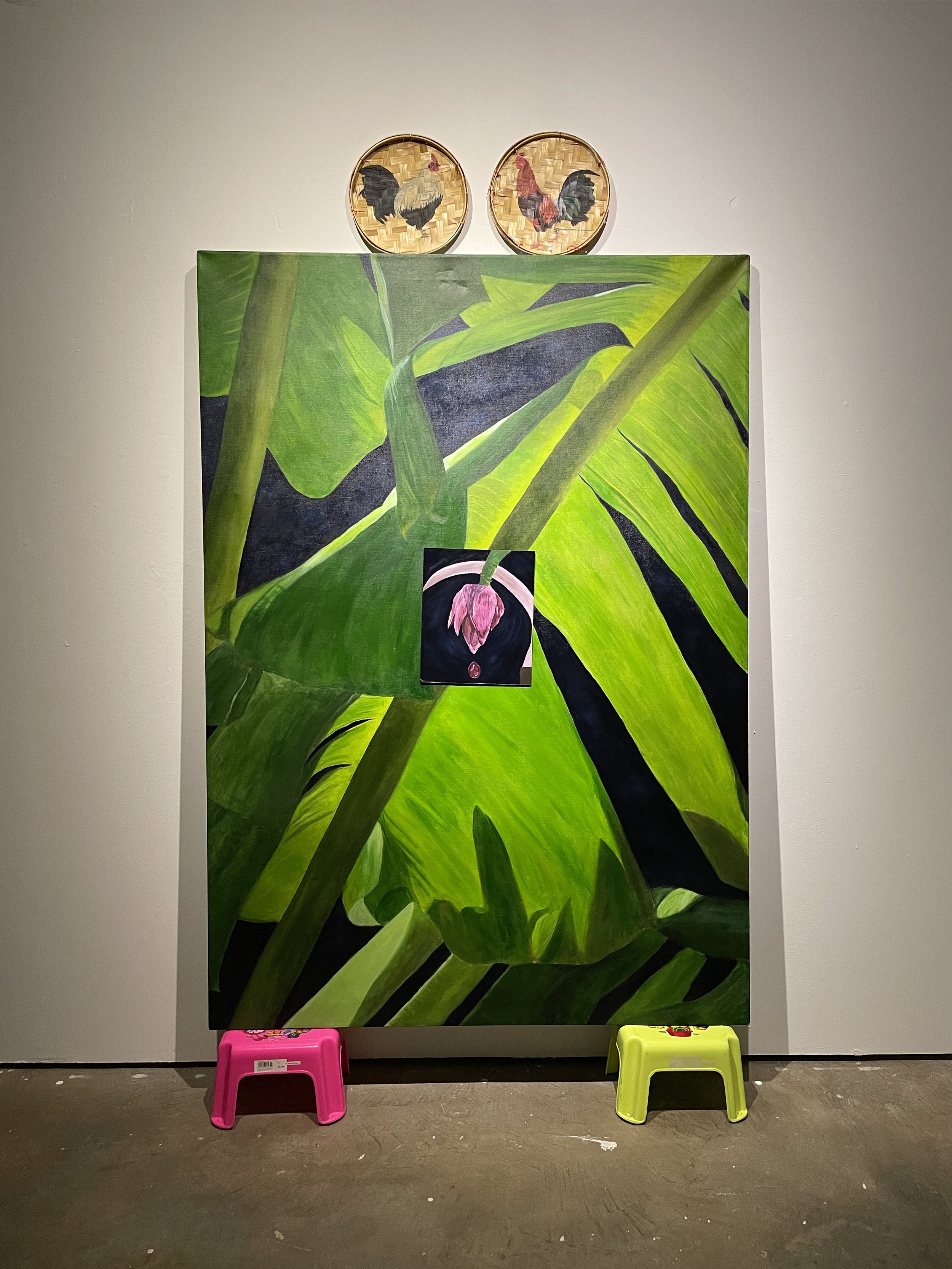

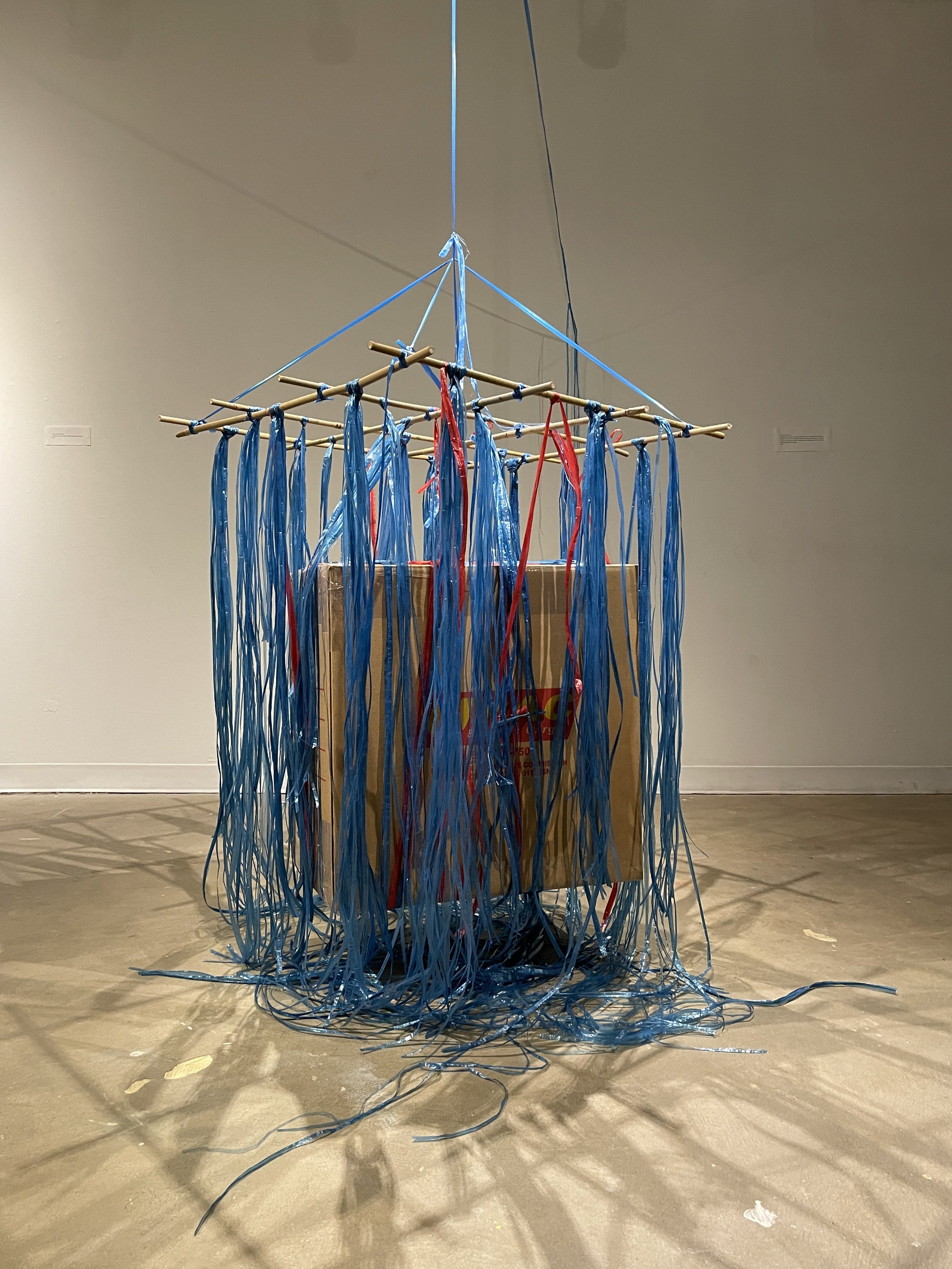
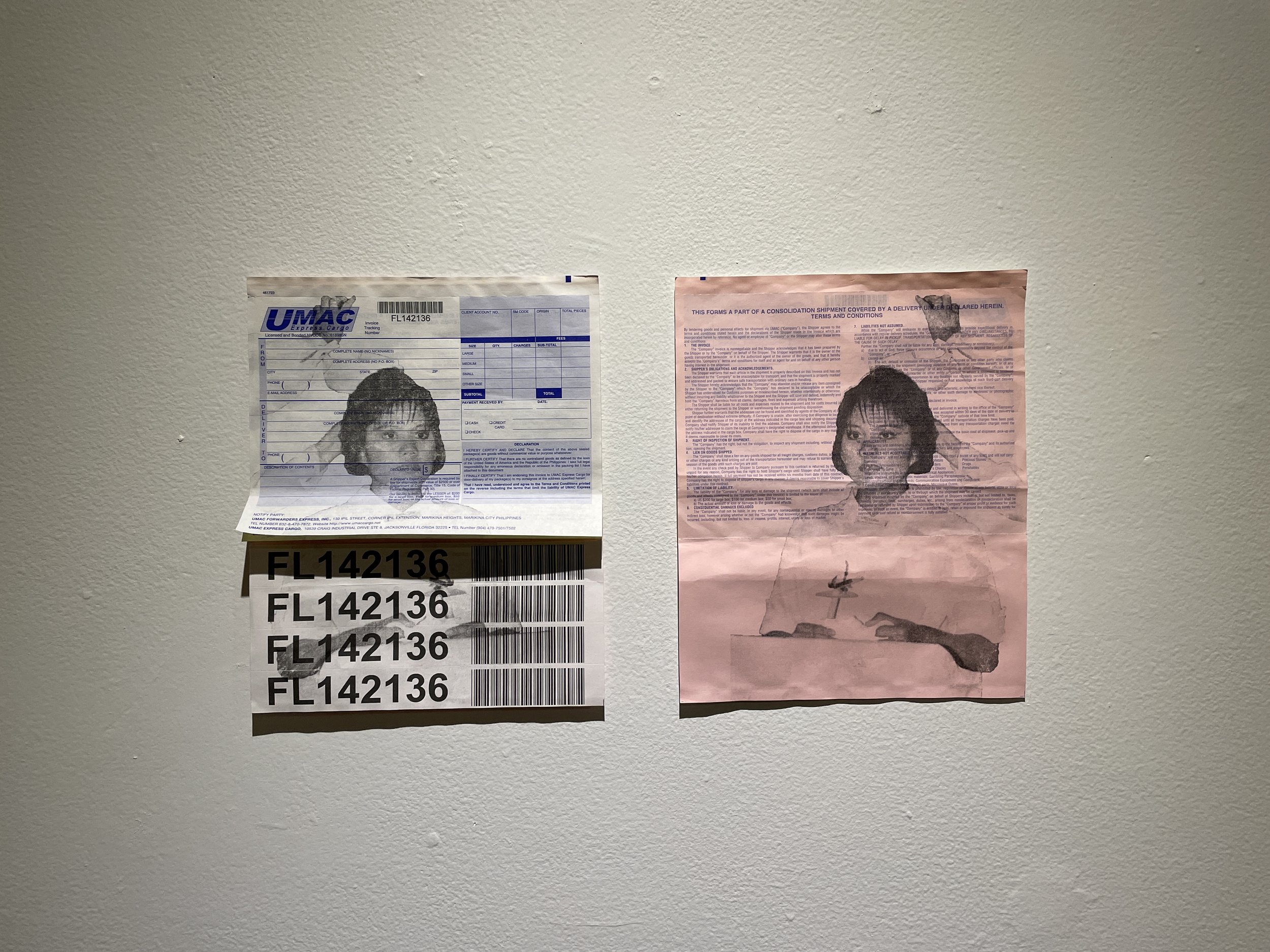
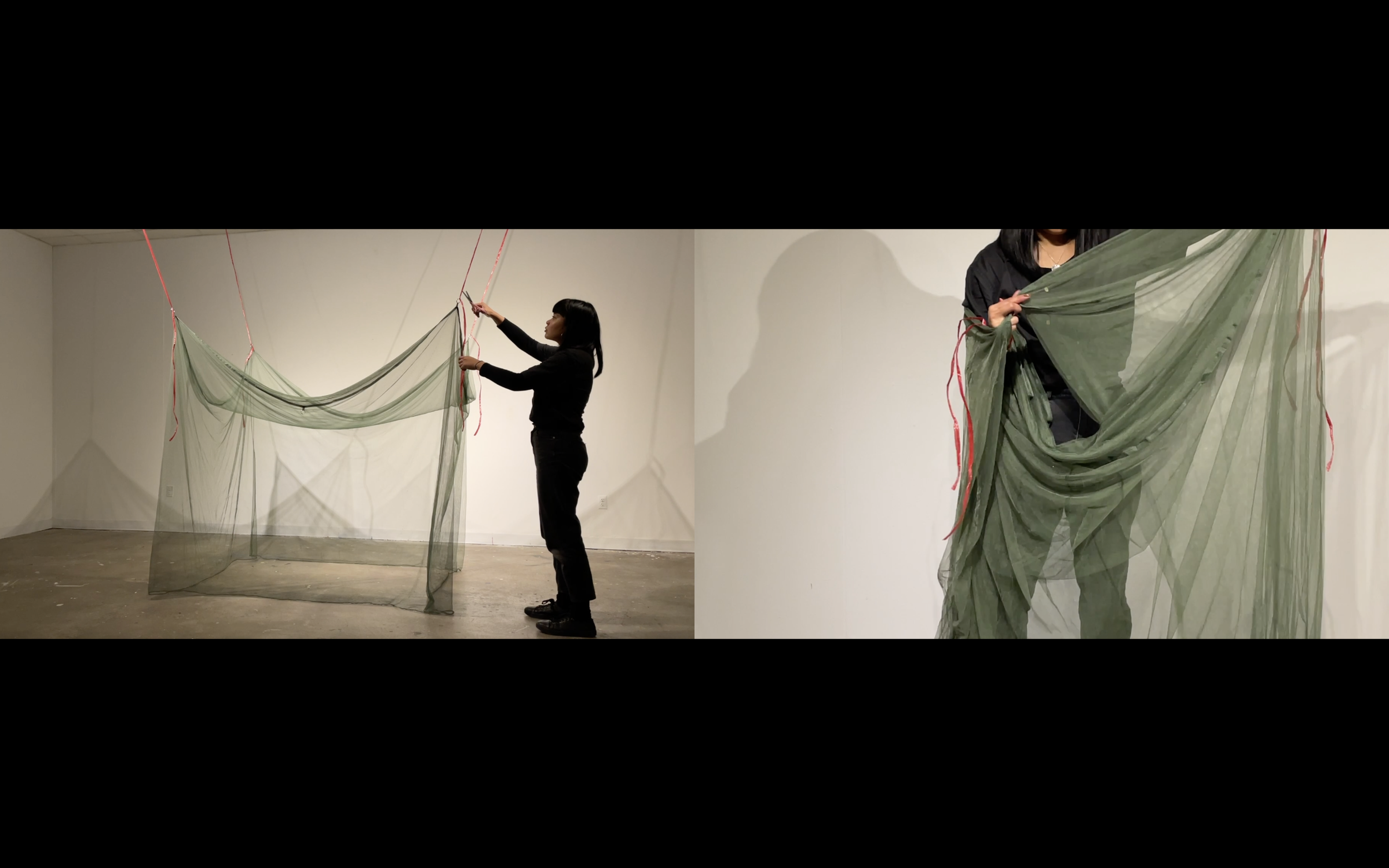
About the artist
Camille Modesto is a Filipino-born interdisciplinary artist. Migration and longing are constant themes in her paintings, sculptures, installations, and videos. She explores her own history of migration together with the colonial and imperial history between the Philippines and the United States to bridge the past and present realities of the two countries. Using photographs and objects from home, she infuses them with collective meaning, bridging the personal to the shared experiences of migration and nostalgia.
Modesto received her BFA from the University of North Florida and is an instructor and an MFA candidate in studio art at Florida State University. She was awarded Adelaide D. Wilson Graduate Fellowship Endowment Fund in 2021. She has exhibited at Working Method Gallery, WJB Gallery in Tallahassee, FL, Avenue 50 Studio in Highland Park, CA, University of Florida Health, CoRK Arts District, University of North Florida Gallery of Art, and Jacksonville Public Library.




